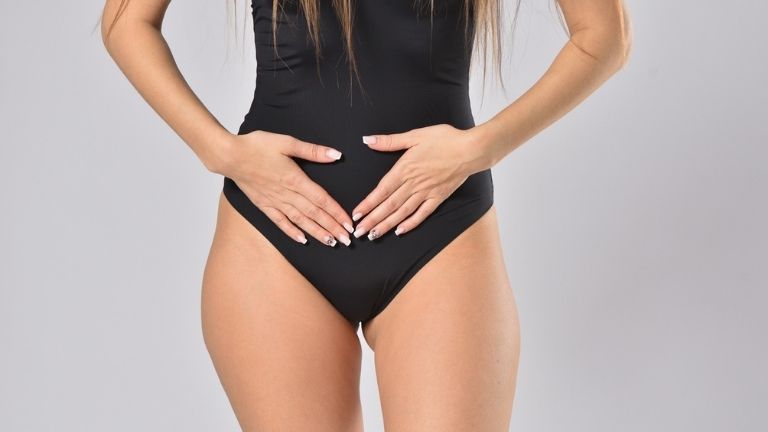It’s time to talk gynea stuff, and for the next installment of our new gynea series we discuss pelvic pain. Join us everyday for two weeks for expert advice on common intimate issues
Call them what you will – ‘women’s issues’, ‘intimate health problems’, ‘gynae things’, whatever, all women will experience at least one or two intimate conditions at some stage in their life.
Over the next two weeks, Healthista will be sharing some common intimate conditions many women experience but don’t talk about.
Here is what is helpful to know about some of the most common intimate issues, today we discuss why you may be experiencing pelvic pain.
Pelvic pain
‘Pelvic pain is felt in the lower abdomen or pelvis,’ says consultant gynaecologist Tania Adib from The Medical Chambers Kensington.
‘It can come on suddenly or gradually. If it persists for longer than six months it is classified as chronic pelvic pain.’
It can be caused by period pain, ovarian cysts, ovulation, endometriosis (a condition where small pieces of womb lining are found outside of the womb, causing pain) or pelvic inflammatory disease (a bacterial infection).
What can help:
Tania Adib says talking over the problem coupled with a thorough examination should uncover the cause of your pelvic pain.
‘In addition blood tests, swabs and an ultrasound may be necessary. Treatment will vary widely depending on the cause.’
Things that you can do at home include the lifestyle changes recommended for PMS.
Ways to manage PMS include:
- eating a well-balanced diet
- eating regularly to avoid blood sugar lows that are likely to make you feel more tired and irritable
- exercise regularly to help increase levels of feel-good serotonin
- aim to get at least seven hours sleep a night
- take over the counter painkillers for cramps and/or headaches for pain
- try supplements that have been shown to help.
Massaging essential oils like lavender onto the abdomen has been found to reduce painful menstrual cramps and period pain.
Try Healthspan CBD range, oils, capsules in different strengths available.
If you have endometriosis one of the things that has been shown to help relieve symptoms in one clinical trial is the spice turmeric, or specifically its active ingredient curcumin – which is thought to help suppress tissue migration of the uterus lining.
A change in diet is also often suggested for endometriosis sufferers including an anti-inflammatory one.
Massaging essential oils like lavender onto the abdomen has been found to reduce painful menstrual cramps
A study has also found that women with endometriosis had significantly higher levels of the stress hormone cortisol – so anything that can help manage stress (think exercise, yoga, relaxation apps) should help.
Medical nutritionist and author of CBD The Essential Guide to Health and Wellness (Simon & Schuster) Dr Sarah Brewer says research has shown women with endometriosis using CBD oil reported being able to reduce their endometriosis medication.
Pelvic inflammatory disease, if diagnosed at an early stage, is usually treated with a two week course of antibiotics.
More Healthista Content:
Weak bladder? 9 tips to manage your symptoms
Warning signs of cancerous moles and what to do about them
Side effects of the pill you may not know about
5 ways your exercise routine could be messing with your sleep
5 foods proven to reduce stress and anxiety
Like this article? Sign up to our newsletter to get more articles like this delivered straight to your inbox.






















































